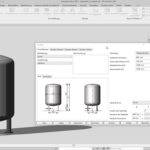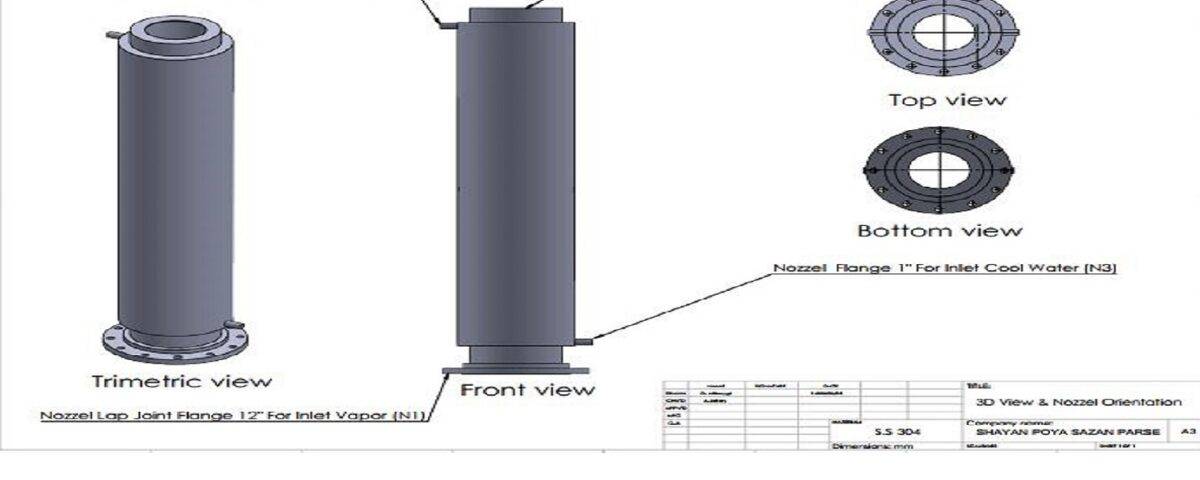Introduction
Vertical condensers are key components in many industrial processes and thermal systems. These devices are primarily used as part of heat exchange and distillation systems in the chemical, petrochemical, and energy industries. The main function of a condenser is to convert vapor into liquid through cooling, and in this process, the released heat is transferred to the surrounding environment.
Designing and constructing a vertical condenser can be challenging due to technical complexities and the need to consider factors such as heat transfer, fluid dynamics, and the selection of suitable materials. Utilizing advanced modeling software such as SolidWorks allows engineers to design, simulate, and analyze condensers more accurately. This software provides powerful tools for 3D modeling, stress analysis, and simulation of thermal and fluid processes.
Before modeling in SolidWorks, it is essential to determine the design specifications of the condenser:
– Capacity: Determine the desired thermal load and condensation capacity.
– Dimensions: Specify the height, diameter, and shell thickness.
– Material Selection: Choose suitable materials based on thermal conductivity, corrosion resistance, and maximum pressure.
Process Description
The design and construction of a vertical condenser is a multi-stage and complex process that involves defining requirements and design specifications, selecting suitable materials, creating a 3D model using SolidWorks, performing thermal and fluid flow analyses and simulations, producing detailed technical drawings, fabricating and assembling components, and finally testing and commissioning the system. In the first stage, performance specifications and operating conditions such as temperature and pressure are defined, which influence material selection. After precise modeling, thermal analyses and fluid behavior simulations inside the condenser are conducted to ensure the efficiency and optimization of the design. Ultimately, after the components are manufactured and assembled, performance tests are carried out to ensure that the condenser operates correctly and effectively meets industrial needs.
This process enables engineers to accurately identify design problems and weaknesses, allowing for necessary changes to be made before final production. Simulations, in particular, assist in understanding the thermal and fluid behavior of the condenser, enabling various operating conditions to be evaluated and the best possible performance extracted from the device. Additionally, technical documentation, which includes construction details and installation and commissioning procedures, helps maintain the performance and efficiency of the condenser throughout its operational life. Ultimately, this design and construction process leads to the production of an efficient and cost-effective vertical condenser that can meet operational requirements and industry standards while optimizing costs and time.
In this project, the drafting of a vertical condenser has been carried out using SolidWorks. The figure below illustrates part of the information related to this design.
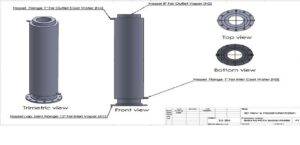
The figure below shows the tag plate related to the vertical condenser.
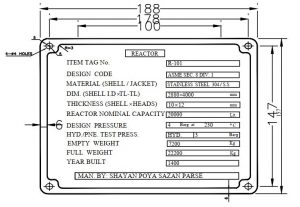
It is important to note that this equipment has been manufactured and utilized in an industrial facility. The figure below shows the constructed vertical condenser.
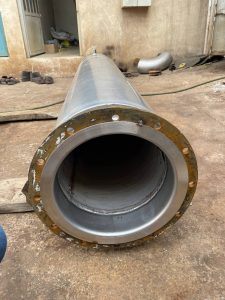
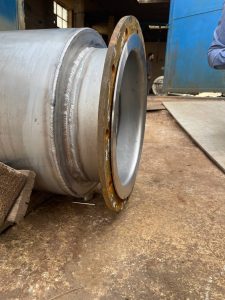
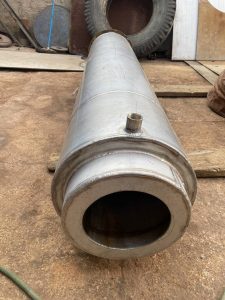
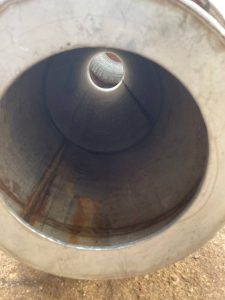
Conclusion
Designing a vertical condenser in SolidWorks involves several stages, from initial drafting to final simulation. By utilizing the capabilities of SolidWorks, engineers can ensure that their designs meet performance specifications and operate efficiently in their applications.
Drafting and Constructing a Vertical Condenser in SolidWorks
In this project, the process of drafting and constructing a vertical condenser in SolidWorks has been carried out.

